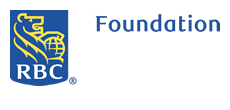Helping hatchlings at Pike River
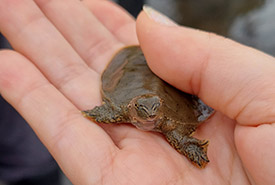
Baby spiny softshell turtle, QC (Photo by NCC)
To thank the generous people who donated to the Nature Conservancy of Canada (NCC), we organized a contest so that the lucky winners could join us in the field and see with their own eyes the practical work that we can achieve with their help. Participants in our virtual event were entered into a random draw. The Pike River Project is the culmination of 25 years of collaboration in the region. It is thanks to landowners like Peter Neville that we met with Mr. Gasser, and thanks to partners — the Zoo, the municipalities — to all our donors and to all our volunteers, that NCC has been able to lend a helping hand to the spiny softshell turtle. This endeavour takes a lot of perseverance and determination, but above all, the efforts of a whole community!
The release!
Our lucky contest-winning donors had the opportunity take part in a unique experience to help the survival of an endangered species in Quebec: the spiny softshell turtle! Since 2009, the Zoo de Granby has been collecting eggs laid by these turtles at the only known egg-laying site in Quebec. The site is at Pike River, and very close to NCC-protected land.
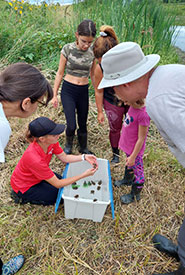
Baby spiny softshell turtles (Photo by NCC)
The release was a memorable event for participants. Véronique Bellavance, biologist and conservation coordinator, and Raphaël Bernier, a nature interpreter, from the Zoo de Granby, welcomed us at the river's edge, where Véronique began by explaining the reasons behind the work being done with the turtles:
“The females lay their eggs on sites close to the water, which are ideal for the survival of the eggs,” she said. “If it's too dry, the babies risk drying out and dying in their eggs, but if the nest is flooded, it's not much better, as the babies drown in their eggs.”
For the past few years, NCC has been meeting with shoreline property owners to educate them about keeping natural shoreline vegetation in place to hold back flooding (for landowner testimonials, see this video). “During the whole month of June, for 10 hours a day, we set up about 50 metres from the egg-laying site, we observe and wait for the females to come and lay their eggs, then we go and collect them. We collected 13 nests this year that containing an average of 19 eggs each,” says Véronique.
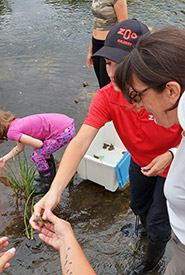
Release in water (Photo by NCC)
The eggs are kept at the zoo until they hatch, and 24 hours after hatching, the young turtles are released into the river where they can begin their lives. Participants had the chance to release several small turtles each, taking advantage of this one-of-a-kind experience to immerse themselves not only in the river setting, but also in conservation actions. “Giving money is one thing, but being able to come out in person and see and even participate hands-on is truly an out-of-this world experience! It's satisfying to see what is being done. We're really making a difference for these turtles!” says Peter Solonysznyj, donor contest winner.
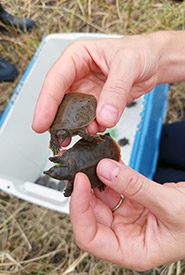
Spiny softshell turtles babies (Photo by NCC)
Peter asked Véronique if there has been any improvement since they began their work with the turtles. “We started the program in 2009 with the goal of releasing 2,000 turtles. We will reach this goal next year. Is it bearing fruit? It's hard to say at the moment. These turtles take 12 to 14 years to reproduce,” she replied with a laugh. “But we'd like to be able to continue this project and show an improvement in the populations. It would be wonderful in a few years if we saw more and more females coming to the nesting site. That might give us some clues that our first turtles released 12 years ago survived and are doing well!”
Let's hope for the best for the future of this species!
Thank you to our generous nature-loving participants, to Véronique and Raphaël, to Zoo de Granby's dedicated biologists and, of course, to all the valued donors who enable NCC to pursue our conservation mission. May you be among our next lucky winners!
 The release team (Photo by NCC)
The release team (Photo by NCC)


